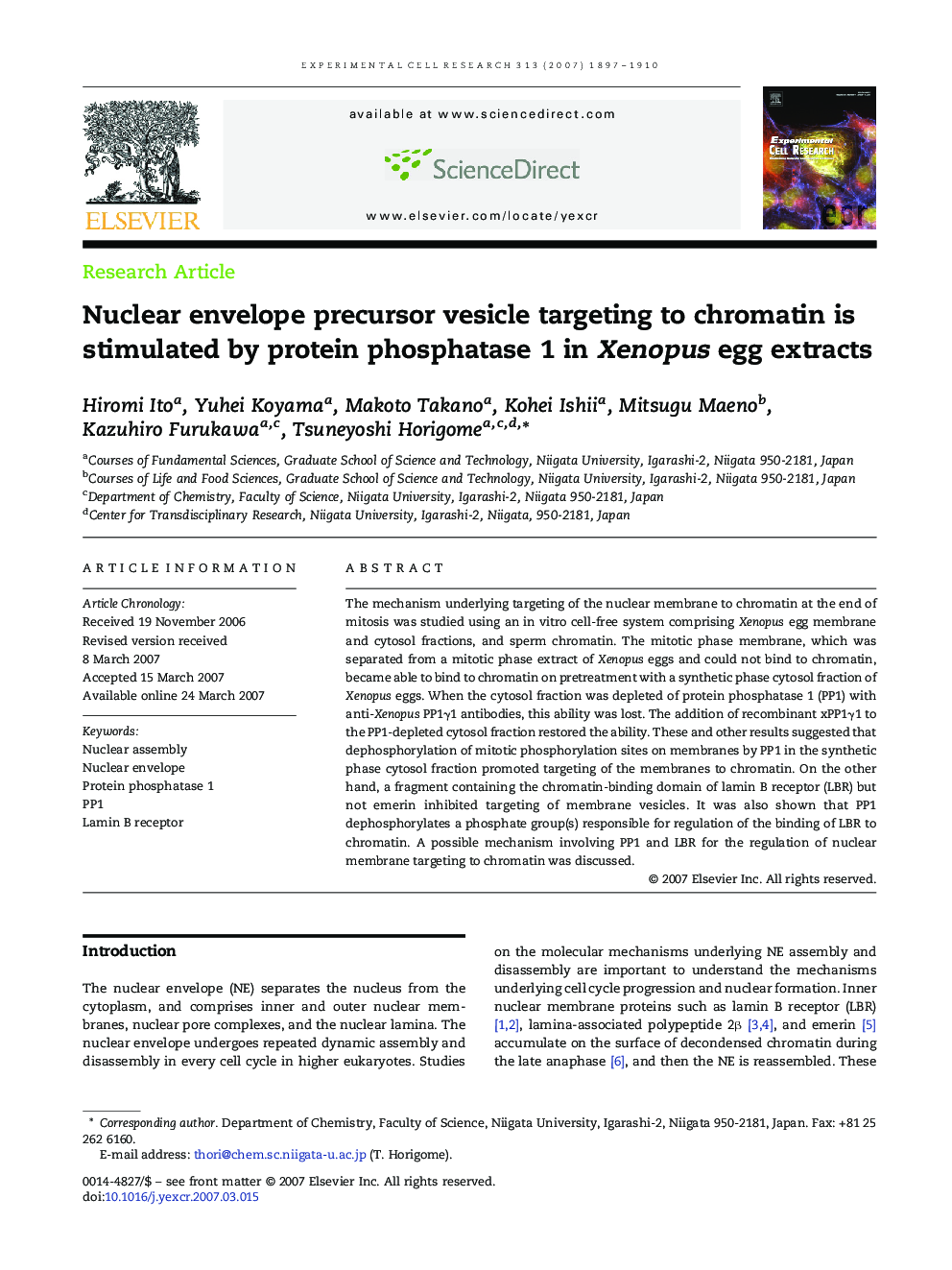| Article ID | Journal | Published Year | Pages | File Type |
|---|---|---|---|---|
| 2131903 | Experimental Cell Research | 2007 | 14 Pages |
Abstract
The mechanism underlying targeting of the nuclear membrane to chromatin at the end of mitosis was studied using an in vitro cell-free system comprising Xenopus egg membrane and cytosol fractions, and sperm chromatin. The mitotic phase membrane, which was separated from a mitotic phase extract of Xenopus eggs and could not bind to chromatin, became able to bind to chromatin on pretreatment with a synthetic phase cytosol fraction of Xenopus eggs. When the cytosol fraction was depleted of protein phosphatase 1 (PP1) with anti-Xenopus PP1γ1 antibodies, this ability was lost. The addition of recombinant xPP1γ1 to the PP1-depleted cytosol fraction restored the ability. These and other results suggested that dephosphorylation of mitotic phosphorylation sites on membranes by PP1 in the synthetic phase cytosol fraction promoted targeting of the membranes to chromatin. On the other hand, a fragment containing the chromatin-binding domain of lamin B receptor (LBR) but not emerin inhibited targeting of membrane vesicles. It was also shown that PP1 dephosphorylates a phosphate group(s) responsible for regulation of the binding of LBR to chromatin. A possible mechanism involving PP1 and LBR for the regulation of nuclear membrane targeting to chromatin was discussed.
Related Topics
Life Sciences
Biochemistry, Genetics and Molecular Biology
Cancer Research
Authors
Hiromi Ito, Yuhei Koyama, Makoto Takano, Kohei Ishii, Mitsugu Maeno, Kazuhiro Furukawa, Tsuneyoshi Horigome,
